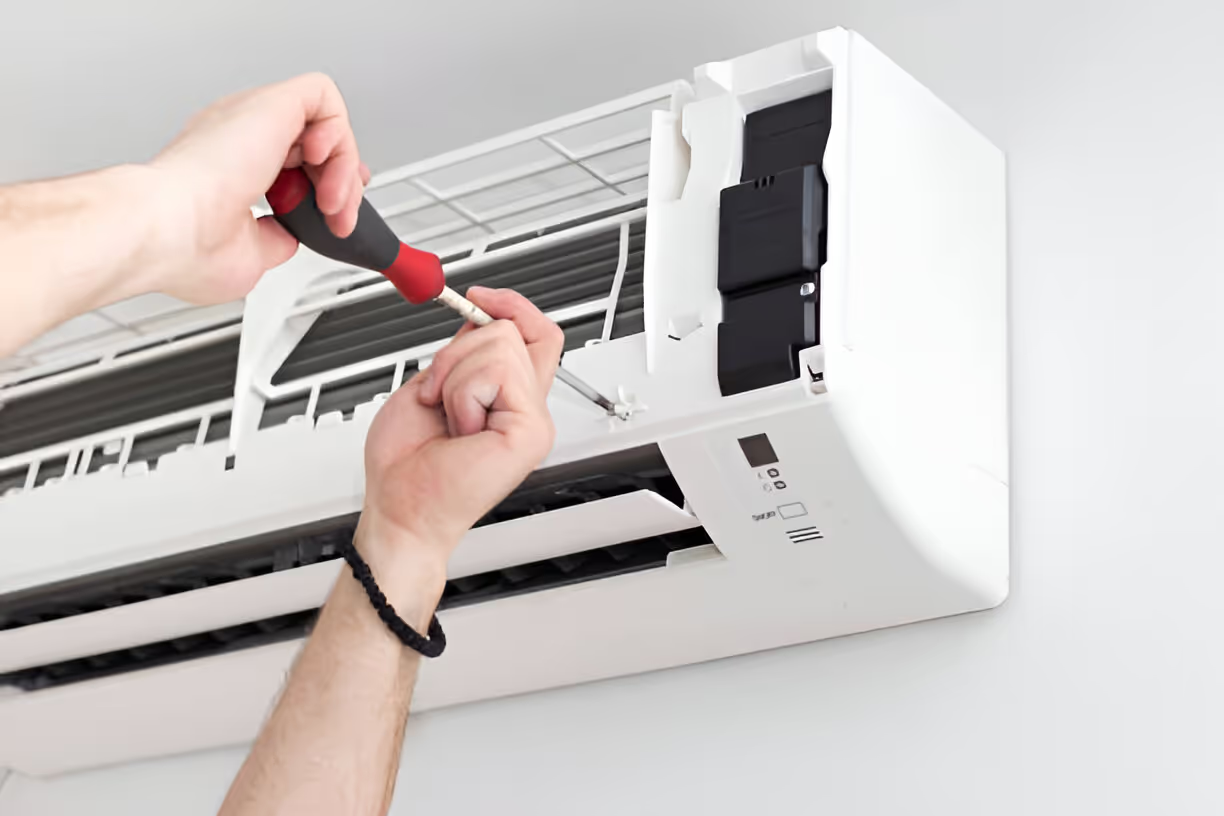Commercial Air Conditioning in Santan Valley, AZ
Keeping commercial properties cool and operational in Santan Valley, AZ requires more than routine repairs — it requires systems and service plans built for desert heat, dust, and seasonal humidity swings. This page explains commercial air conditioning solutions specifically for Santan Valley businesses: system selection and installation, rooftop and packaged unit service, preventative maintenance contracts, large-scale diagnostics and repairs, energy-efficiency upgrades, compliance and safety considerations, project timelines and financing, and how to structure service agreements for commercial properties in the area.

Which commercial systems work best in Santan Valley
Commercial facilities in Santan Valley commonly use:
- Rooftop packaged units (RTUs) — durable for warehouses, retail, and office buildings; easiest to service but exposed to sun and dust.
- Split systems and ducted rooftop split systems — used where indoor equipment is preferred.
- VRF/ductless systems — efficient for multi-zone office complexes and tenant improvements.
- Chilled water systems and air-cooled chillers — typical for larger complexes or buildings with central plant infrastructure.Selecting the right system depends on building size, occupancy patterns, roof load capacity, and utility cost considerations. In the Santan Valley climate, prioritizing units with strong high-ambient performance and robust coil protection is important.
Common commercial air conditioning issues in Santan Valley, AZ
Local climate and building usage drive predictable problems:
- Dust and sand buildup on coils and filters that reduce capacity and cause short cycling.
- Overstressed compressors and components during extended high-heat periods, shortening equipment life.
- UV and heat degradation of rooftop unit components and duct insulation.
- Condensate drainage and corrosion issues during monsoon-driven humidity spikes.
- Inconsistent zone temperatures in retrofitted buildings due to undersized or improperly balanced systems.Understanding these common issues helps prioritize preventative measures and reduces emergency downtime.
Diagnostics, large-scale repairs, and rooftop unit service
Commercial diagnostics begin with a systems-level assessment and progress to component-level testing:
- Initial site survey — review equipment age, runtime logs, roof access, service history, and energy bills.
- Performance testing — measure airflow, superheat/subcooling, electrical draw, and static pressure to identify inefficiencies.
- Infrared and coil inspection — reveal refrigerant distribution problems and fouled coils.
- Operational sequencing check — verify controls, economizers, and safety interlocks function correctly.Common large-scale repairs include compressor replacement, refrigerant leak repairs, motor and VFD replacement, coil repair or replacement, and rooftop curb and support work. For rooftop and packaged units, attention to curb sealing, access pathways, and weatherproofing is critical given Santan Valley sun exposure and monsoon winds.
Preventative maintenance contracts for Santan Valley properties
Preventative maintenance in this region is a proactive cost-saver. Typical contract features:
- Scheduled visits (quarterly or biannual for high-use systems) including filter changes, coil cleaning, refrigerant checks, and belt inspections.
- Priority response windows and documented service histories for warranty and insurance compliance.
- Seasonal tune-ups before peak summer to ensure capacity and efficiency.
- Predictive maintenance options using runtime data and building automation system (BAS) trend analysis to catch failures early.Contracts are often tiered: basic inspections, enhanced preventive packages including parts discounts, and full-service plans with labor included. For Santan Valley facilities, increasing frequency during summer months reduces risk of heat-related failures.
Energy-efficiency upgrades and long-term savings
Upgrades deliver two main benefits in Santan Valley: improved comfort control during extreme heat and lower operating costs. Common options:
- High-efficiency rooftop unit replacements with variable-speed compressors and ECM fans.
- Economizer retrofits and demand-controlled ventilation to reduce makeup-air cooling loads when outdoor conditions allow.
- VFDs on large fans and pumps to match output to demand.
- Smart thermostats and BAS integration for optimized scheduling and remote diagnostics.
- Enhanced coil coatings and filtration to mitigate dust impacts and preserve efficiency.Upgrades should be evaluated against local utility rates and peak demand charges; in many cases, improved efficiency reduces peak load and extends equipment life.
Compliance and safety considerations
Commercial projects must meet refrigerant handling rules, electrical codes, mechanical codes, and local building permit requirements. For Santan Valley:
- Ensure certified technicians handle refrigerant recovery and leak repair to meet federal and state refrigerant regulations.
- Roof work must account for safe access, fall protection, and proper curb flashing to maintain roof warranties.
- Ventilation and indoor air quality compliance is important for occupied spaces; confirm code-required outside air rates and make-up systems are operating.
- Documented testing and commissioning is often required for tenant improvements or large equipment replacements to demonstrate code compliance and warranty activation.
Project timelines, sequencing, and financing
Typical project phases and durations:
- Assessment and proposal: 1–2 weeks depending on complexity and access to building records.
- Permit and procurement: 2–6 weeks for permits and lead times on larger pieces of equipment.
- Installation and commissioning: small rooftop replacements can be completed in a day or two; larger changeouts and ductwork modifications may take 1–4 weeks.
- Testing and balancing and final commissioning: 3–7 days after major installs to ensure system performance.Financing options for commercial HVAC in this market commonly include equipment loans, lease-to-own, municipal or utility incentive programs, and energy service contracting for performance-based upgrades. Structuring payment terms to align with project milestones and cash flow is standard practice.
Structuring service agreements for commercial properties in Santan Valley
A strong service agreement balances predictable costs with clear performance expectations:
- Define scope of services, visit frequency, and included parts versus billable parts.
- Set response time windows for urgent versus routine calls and include escalation contacts.
- Include documentation and reporting — inspection reports, energy-consumption tracking, and maintenance logs.
- Specify warranty and labor coverage after repairs or equipment replacement.
- Allow for seasonal adjustments based on Santan Valley climate demands.Well-structured agreements reduce unplanned downtime, support compliance documentation, and help budget for capital replacements.
ConclusionCommercial air conditioning in Santan Valley, AZ presents unique challenges from intense summer heat, dust exposure, and seasonal humidity. Prioritizing robust system selection, regular preventative maintenance, targeted efficiency upgrades, and clear service agreements keeps buildings comfortable, compliant, and cost-effective over the long term.






